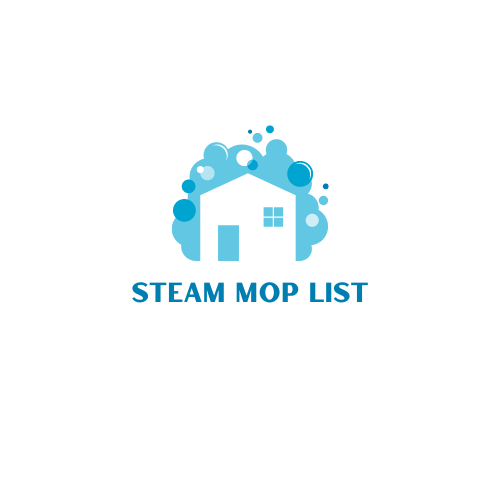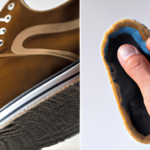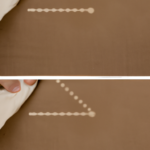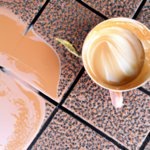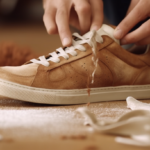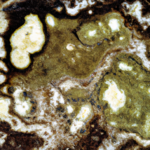Cleaning
How To Remove Latte Stains From Suede Materials

Suede materials are admired for their luxurious and soft texture, making them a popular choice for clothing, shoes, and accessories. However, maintaining and cleaning suede can pose considerable difficulties. One of the toughest challenges involves removing stains, particularly those from beverages like coffee or tea.
In this article, I will share with you some effective techniques on how to remove latte stains from suede materials. Latte stains can be frustrating as they tend to leave a noticeable mark on suede items. Fortunately, there are various methods that you can use to tackle this issue.
Depending on the severity of the stain, some techniques may work better than others. By following these steps carefully, you can effectively remove latte stains from your suede item without causing any further damage or discoloration.
Key Takeaways
- Acting quickly is crucial when dealing with a latte stain on suede.
- Use a suede cleaner specifically designed for removing stains and avoid rubbing the stain.
- Always test any cleaning solution on an inconspicuous area first before applying it to the stained area.
- Cornstarch is an effective alternative to vinegar in removing latte stains from suede materials.
Understanding Suede Materials and Latte Stains
Suede may be soft and luxurious, but it’s also a magnet for latte stains – let’s find out how to tackle them! Suede cleaning tips are important to know if you want to maintain the beauty of your suede items.
When it comes to coffee stain removal techniques, there are some things you should keep in mind. Firstly, always act quickly when dealing with a latte stain on suede. The longer you wait, the harder it will be to remove the stain. Blot up as much of the liquid as possible using a clean cloth or paper towel. Avoid rubbing the stain as this can push it deeper into the fabric and make it more difficult to remove.
Next, use a suede cleaner specifically designed for removing stains. Apply a small amount of cleaner onto a clean cloth and gently rub in circular motions over the stained area. Be careful not to saturate the suede with too much moisture as this can cause damage. Once you’ve cleaned the stain, allow your item to air dry before moving on to preparing it for further treatment.
To prepare your suede item for additional treatment after cleaning off any latte stains, gently brush it with a soft-bristled brush in one direction. This will help restore its natural texture and give it a fresh look.
With these steps completed successfully, your suede item’s now ready for any further care that might be required!
Preparing the Suede Item
Before you start, make sure you have an appropriate cleaning solution and a soft-bristled brush to gently clean the affected area. When it comes to suede materials, it’s important to be cautious during the cleaning process as they are delicate and can easily get damaged. There are several ways to prepare your suede item before cleaning that will help prevent further damage.
To begin, use a suede brush or a soft-bristled toothbrush to remove any dirt or debris on the surface of the material. Brush in one direction only and avoid rubbing back and forth as this can cause damage. Next, stuff the inside of your shoes or bag with tissue paper or a clean cloth to help maintain their shape while cleaning. This also helps absorb any excess moisture from the cleaning solution.
In addition, always test any cleaning solution on an inconspicuous area first before applying it to the stained area. Suede is sensitive to water and other liquids so using too much liquid can cause discoloration or watermarks. It’s best to use specialized suede cleaners that are specifically designed for removing stains without damaging the material. By taking these simple precautionary steps, you can ensure that your suede item is prepared for a successful stain removal process.
Cleaning solutions and proper maintenance tips are essential when dealing with latte stains on suede materials. Now that your suede item is properly prepared for cleaning, let’s move on to blotting out the stain without causing further damage.
Blotting the Stain
Now it’s time to tackle the pesky mark on your favorite suede item with gentle blotting using a clean cloth or paper towel. This is an important step in removing any excess liquid and preventing the stain from spreading further into the material.
Here are some useful tips for effective blotting:
- Avoid rubbing or scrubbing the stain, as this can cause damage to the suede fibers and push the stain deeper into the material.
- Instead, gently dab at the stain with a clean cloth or paper towel, starting from the outer edges and working your way towards the center of the mark.
- Continue blotting until you have removed as much moisture as possible from the surface of the suede.
Once you have completed this step, it’s time to move on to drying techniques and alternative cleaning methods that may be necessary for stubborn stains.
Next up is using vinegar, which can be an effective solution for removing tough stains from suede materials without causing damage.
Using Vinegar
You can easily use vinegar to get rid of those pesky marks on your favorite suede item. Vinegar is an excellent cleaning agent for removing stains from suede materials. Not only is it a cheap and readily available household item, but it also has numerous benefits when used for cleaning suede.
One of the main benefits of using vinegar for cleaning suede is that it’s mild and won’t damage the delicate material. Unlike harsh chemicals or cleaners, vinegar won’t strip away any color or texture from your suede item. Additionally, vinegar helps to restore the natural oils in the material, making it look shiny and new again.
Besides its effectiveness in removing stains from suede, vinegar also has alternative uses for household cleaning purposes. For instance, mixing equal parts water and vinegar creates an all-purpose cleaner that can be used on various surfaces around your home like countertops or floors. The acidic properties of vinegar make it a great disinfectant as well as a deodorizer.
To transition into the next section about ‘using cornstarch,’ consider writing: Another effective method for removing stubborn stains from suede involves using cornstarch to absorb excess moisture before treating with other cleaning agents.
Using Cornstarch
Congratulations, genius! You spilled your coffee on your favorite suede jacket and now it looks like a hot mess. But fear not, because cornstarch is here to save the day and restore your jacket to its former glory.
Cornstarch is a great alternative to vinegar when it comes to removing latte stains from suede materials. Not only is it effective in removing stains, but it also has other benefits that make it an essential household item.
One of the benefits of cornstarch is its ability to absorb moisture. This makes it an excellent solution for cleaning suede materials as it can effectively remove any wet or dampness caused by spills or sweat stains.
Additionally, cornstarch has other uses such as thickening soups and sauces, making doughs and batters, and even as a substitute for talcum powder.
To use cornstarch for removing latte stains from suede materials, start by blotting the excess liquid using a clean cloth. Then sprinkle some cornstarch onto the stain and let it sit for at least 30 minutes before brushing off with a soft-bristled brush. Repeat this process until the stain disappears completely. If there are still remnants of the stain after several attempts, you may proceed with using a suede eraser.
Now that you know how beneficial cornstarch is in cleaning suede materials, you don’t have to worry about spilling coffee or any other liquids on your favorite jacket or shoes. Using this household item can effectively clean and remove stubborn stains without causing damage to your precious items.
Next up: "Using a Suede Eraser".
Using a Suede Eraser
When dealing with a stubborn latte stain on suede, I find that using a suede eraser is an effective solution.
To start, gently rub the stained area with the eraser in circular motions until the stain begins to lift.
Once the majority of the stain has been removed, it’s important to brush the suede with a soft brush to restore its texture and remove any remaining debris.
Gently Rub the Stain with a Suede Eraser
Using a suede eraser, gently rub the stained area to lift and remove any traces of latte, creating a clean and smooth surface. A suede eraser is an effective tool in removing stains from suede materials because it’s specially designed to work with the delicate fibers of suede without causing damage or discoloration.
The benefits of using a suede eraser are twofold: first, it removes the stain without leaving any residue behind; and secondly, it helps restore the texture and appearance of the suede.
To use a suede eraser properly, start by lightly rubbing the stained area with gentle circular motions. Be sure not to apply too much pressure as this can cause damage to the surface of the material.
After you have removed as much of the stain as possible using the eraser, brush the suede with a soft brush in one direction to restore its natural nap.
Tips for maintaining your suede materials include avoiding exposure to water or other liquids that may cause staining and using protective sprays specifically designed for use on suede surfaces.
With proper care and attention, your suede materials will stay looking their best for years to come!
Brush the Suede with a Soft Brush
After gently rubbing with a suede eraser, it’s time to give your suede some love by brushing it with a soft brush to restore its natural texture. A soft-bristled brush is the perfect tool for removing any remaining dirt or debris from the surface of your suede material. When using a soft brush, it is important to use gentle strokes in the direction of the nap (the raised fibers on the surface of the fabric) to avoid damaging it.
Here are some soft-brush techniques that you can follow when trying to remove latte stains from your suede materials:
| Technique | Description |
|---|---|
| Dry Brushing | Use a dry brush to gently sweep away any remaining dirt and debris from the surface of your suede. Make sure not to press too hard as this may damage the fabric further. |
| Damp Brushing | Dip your soft-bristled brush in water and lightly tap off any excess moisture before using it on your suede material. Again, be sure to use gentle strokes in the direction of the nap when brushing. |
| Cornstarch Method | Another alternative stain removal method involves applying cornstarch onto stained areas and leaving it overnight. The next day, remove excess cornstarch using a soft-bristled brush until all traces of cornstarch have disappeared. |
Using these techniques will help revive your suede material back to its original state while also effectively removing stubborn latte stains without causing damage or discoloration. If these methods do not work, consider purchasing a specialized suede cleaning kit for more advanced stain removal processes.
Using a Suede Cleaning Kit
I highly recommend purchasing a suede cleaning kit to effectively clean your suede materials. These kits contain all the necessary tools and products specifically designed for cleaning and preserving suede.
It’s important to carefully follow the instructions provided in the kit to avoid any damage or discoloration of your suede items.
Purchase a Suede Cleaning Kit
You can easily tackle those stubborn latte stains on your suede material by picking up a suede cleaning kit. These kits are widely available in stores and online, and they contain all the necessary tools to remove stains from your suede material.
Here are some pros and cons of purchasing a suede cleaning kit:
-
Pros: Suede cleaning kits are specifically designed to clean and protect suede materials. They contain brushes, erasers, sprays, and other products that are safe for use on delicate fabrics like suede. Using a kit ensures that you have all the necessary tools in one place.
-
Cons: The cost of a suede cleaning kit can be higher than purchasing individual products separately. Additionally, not all kits are created equal – some may not work as well as others on certain types of stains or fabrics.
Overall, purchasing a suede cleaning kit can be an effective way to remove latte stains from your prized possessions made of this delicate fabric. To ensure successful results, follow the instructions provided with the kit carefully before proceeding with any stain removal process.
Follow the Kit’s Instructions
By carefully following the instructions provided in the suede cleaning kit, one can effectively clean and protect their delicate fabrics. The kit typically includes a suede brush, eraser, and cleaning solution. It’s important to read the instructions thoroughly before beginning the cleaning process to ensure that all steps are followed correctly.
One common mistake people make when using a suede cleaning kit is applying too much pressure with the brush or eraser, which can damage the material. It’s also important to use gentle, circular motions when brushing or erasing stains.
Alternative methods such as using vinegar or water should be avoided as they may cause discoloration or further damage to the fabric. If after attempting to clean the stains yourself you’re still unsatisfied with the results, it may be time to seek professional help for restoring your suede materials back to their original condition.
Seeking Professional Help
When it comes to suede cleaning, there are times when seeking professional help is necessary. For instance, if the stain is too stubborn or the material is delicate and requires special attention, it’s best to leave it to the experts.
To ensure that your suede items are in good hands, finding a reputable suede cleaner is crucial. Look for someone who has years of experience and uses safe and effective methods to clean suede materials.
When to Seek Professional Suede Cleaning Services
If your suede material has tough latte stains that won’t come off, it’s time to consider professional cleaning services. While there are DIY alternatives for suede cleaning, sometimes the cost of professional cleaning is worth it.
Here are some factors to consider when deciding if you should seek professional help:
-
The extent of the stain: If the latte stain is deep and has set into the suede, it may be difficult to remove without damaging the material.
-
The age of the suede: Older suede materials are more delicate and require extra care during cleaning.
-
Your level of experience: If you’re not confident in your ability to clean suede without causing damage, it’s best to leave it to professionals.
-
The cost of professional cleaning: While it may seem expensive at first, paying for a reputable cleaner can save you money in the long run by preventing further damage to your item.
-
Time constraints: If you need your item cleaned quickly or have a busy schedule, hiring a professional cleaner can take one less task off your plate.
Before finding a reputable suede cleaner, assess whether or not professional cleaning services are necessary for your specific situation. Once you’ve decided that they are, follow these tips for finding a trustworthy and effective cleaner.
Finding a Reputable Suede Cleaner
Looking for a reliable cleaner to take care of your suede items can be overwhelming, especially if you’re on a budget. However, there are affordable options available if you take the time to compare different suede cleaning services. Don’t settle for the first one you find – ask around and compare prices and services offered before making your decision.
When looking for a reputable suede cleaner, it’s important to do your research. Check out their online reviews and ask about their experience in handling delicate fabrics like suede. Don’t be afraid to ask for references or examples of their work.
By finding a reliable cleaner who understands the intricacies of working with suede, you can ensure that your items will be well taken care of and returned to pristine condition.
Preventing future stains is just as important as finding the right cleaner, so let’s dive into some tips on how to keep your suede looking its best.
Preventing Future Stains
To avoid future stains on your suede materials, it’s important to take preventive measures. One of the best ways to do this is by using a suede protector spray on your shoes or accessories. This product will form a barrier between the suede and any liquids that come into contact with it, making it easier to clean up spills before they have a chance to set in.
In addition to using a suede protector spray, there are other alternative cleaning methods that can further help prevent future stains. For example, you can use a soft-bristled brush to gently remove dirt and debris from the surface of your shoes or accessories. You can also try using a specialized eraser made specifically for suede materials. This can be used to lift away small spots and stains without damaging the delicate fabric.
It’s important to store your suede items properly when not in use. Keep them in a dry, cool place away from direct sunlight or heat sources. Avoid exposing them to moisture or humidity as much as possible, as this can cause discoloration and even mold growth over time.
By taking these simple steps, you can protect your suede items and ensure they stay looking their best for years to come!
Frequently Asked Questions
Can I use any type of vinegar to remove the stains from my suede item?
Well, let me tell you, when it comes to removing stains from suede materials, not all vinegars are created equal.
While white vinegar is a popular choice for stain removal due to its acidic properties, using it on suede can actually cause more harm than good. It can discolor the delicate material and leave behind unsightly water spots.
Instead, I recommend trying apple cider vinegar or red wine vinegar as alternatives for suede stain removal. These types of vinegar are less acidic and gentler on the material.
However, before attempting any cleaning method on your suede item, always test a small inconspicuous area first and consult with a professional cleaner if necessary.
Should I wet the suede item before using cornstarch to remove the stains?
When it comes to removing stains from suede, it’s generally not recommended to wet the material as it can cause further damage. Cornstarch can be an effective method for absorbing excess moisture and oil from a stain on suede. However, it’s important to note that this method may not work for all types of stains and could potentially leave residue behind.
It’s always best to test any stain removal method on a small, inconspicuous area first before applying it to the entire stained area. There are also alternative stain removal methods such as using a suede eraser or taking the item to a professional cleaner that specializes in suede cleaning.
Will using a suede eraser damage the material?
Using a suede eraser can be a great way to remove stains from suede materials. However, it’s important to take precautions when using one to avoid damaging the material.
One alternative to using a suede eraser is to use a soft-bristled brush or cloth to gently rub away the stain. If you do choose to use a suede eraser, make sure that it’s specifically designed for use on suede and that you test it on a small, inconspicuous area first.
When using the eraser, apply gentle pressure and work in small circles until the stain lifts away. Be careful not to rub too hard or for too long as this could damage the material.
How long should I wait before attempting to remove the stain after spilling the latte on my suede item?
When it comes to removing a latte stain from suede, timing is crucial. As soon as you spill the latte on your suede item, try to blot the excess liquid with a clean cloth or paper towel. However, don’t rub the stain vigorously as it may spread and embed deeper into the fabric.
Instead, allow the stain to dry completely before attempting any removal techniques. Waiting for at least 24 hours is recommended so that the stain has fully set and can be treated properly.
It’s also important to take precautions during this waiting period by avoiding exposing the suede item to heat sources or direct sunlight as this can cause further damage. With these tips in mind, you can effectively remove latte stains from your suede items without damaging them in the process.
Can I use a regular stain remover on my suede item instead of seeking professional help?
As someone who’s dealt with many stains on my suede items, I understand the temptation to try a DIY method or use a regular stain remover.
However, when it comes to suede materials, it’s important to be cautious and seek professional help if needed.
While there are some stain remover alternatives out there for suede, they can be risky and potentially damage the material further.
It’s always best to do research beforehand and follow any specific care instructions provided by the manufacturer.
In short, while DIY cleaning methods may work for some materials, it’s better to err on the side of caution when dealing with delicate fabrics like suede.
Conclusion
Well, that’s how you can remove latte stains from suede materials! As someone who loves wearing suede shoes and owning suede bags, I know how frustrating it can be to accidentally spill a drink on them. However, with the right tools and techniques, it’s possible to completely remove the stain.
It’s important to remember that prevention is key when it comes to keeping your suede items looking their best. Be mindful of where you place your drinks and try to avoid wearing your suede items in areas where spills are more likely to occur. By taking these steps, you can help prolong the life of your beloved suede possessions.
Hi, I’m Ellen. I love making cleaning fun and rewarding – so everyone can feel confident in their ability to keep their space spick and span. Our vision is a world where everyone knows how to clean their home. In the meantime, I’ll continue writing Steam Mop List to help make your life a little easier (and hopefully a little more fun).
Cleaning
Incoming Visitors Arrive in One Hour, and The House Is a Mess! Five Tips to Clean Your House Fast

Guests are expected in an hour, and the area is in total disarray!
The Five D’s
Deep Breathing, attaining De-clutter, Diligence in Dusting, Disinfecting the doorknobs and Doing the dishes. These five D’s will have your house clean in no time!
- Deep Breathing will help you relax and afford you the focus you need to get through each task on your list.
- Attaining De-clutter will help you organize your belongings and make it easier to put things away after use.
- This will also help with dusting; if there is less clutter, there will be less for the dust to adhere to!
- Disinfecting the doorknobs is key in illness prevention; remember to wipe down light switches, countertops, and other commonly touched surfaces.
- And finally, doing the dishes. Whether you have a dishwasher or not, tackling the dishes as soon as they pile up will make a big difference in how your kitchen looks and feels.
Take a Deep Breath
So go ahead and take a deep breath… now get to work! Relax! You’ve arrived to the correct location. Take a few deep breaths and calm down before reading on. Here are some ideas for cleaning your home in no time.

Cleaning Strategy
The secret to cleaning your house the quickest and easiest way is to have a strategy that you can rely on, especially when it comes to cleaning activities. One helpful approach is to categorize your living area into zones.
Splitting your home into smaller sections makes it less intimidating. It’s also a good idea to establish a deadline (and stay on track!) for working in a particular zone so you can have your house ready for visitors quickly.
Here’s a zoning map that you can use for your home. You may make changes to the zoning classifications as needed; see what works best for you:
- Bedroom
- Bathroom
- Kitchen
- Living Room
- Receiving and Entertainment Spaces
- Front Door
Simple Ways to Make Your Home Smell Amazing
Making your home smell, appear, and feel clean is the key to keeping it that way. You must wash or wipe away germs and pollutants that give your living space a dump-like atmosphere.
Use the Four W’s to make your home as clean as a hospital:
- Wipe down the counter and dining table.
- Wash and disinfect the bathroom sink, bathtub, and toilet.
- Wipe off dust, dirt, or stains from surfaces using a microfiber cloth.
- Remove the bag from your water heater, fill it halfway with water, and wash and store all of your dishes.
It’s a good idea to practice the Four Ws regularly so that dirt and grime don’t accumulate. In this manner, you won’t have to worry about your visitors detecting something unpleasant when you need to clean up in a hurry.
Get a Steam Mop
A clean house is a happy house – or so the saying goes. But in reality, keeping your home neat can be a never-ending battle. Between work, family, and social obligations, finding the time (or energy) to give your place a deep clean can be challenging. However, you can do a few simple things to make cleaning easier.
One of them is investing in a quality steam mop or vacuum cleaner. A steam mop uses jets of dry steam to clean surfaces, removing dirt, grime, and bacteria.
Not to mention, it can make wiping and cleaning surfaces much more manageable. So if you’re looking for an easy way to keep your home clean, investing in a steam mop is a good idea.
As any homeowner knows, keeping a house clean and presentable is no small feat. In addition to daily chores like dusting and sweeping, the occasional deep cleaning are necessary to maintain a healthy and happy home. However, it is not just physical dirt that can make a house feel unclean. Noxious odors can also be a significant source of discomfort, making it essential to eliminate anything that might contribute to an unpleasant smell.
One of the best ways to combat foul odors is to identify and eliminate their source. This means removing anything in your house that might emit an unpleasant scent. This could include old food, pet waste, or dirty laundry. Once you have removed the offending item, clean the area to prevent the odor from returning thoroughly. Sometimes, you may also need to deodorize the room with a spray of air freshener. Taking these steps can help keep your home smelling fresh and inviting for family and guests alike.
Most Women Are More Sensitive to Odors
Riffling through your house and disposing of smelly stuff may not be at the top of your to-do list, but if you want to make your man-cave smell fresh and clean, it’s worth taking the time to do. Women are more sensitive to odors than men, so even if you can’t smell anything foul, there’s a good chance she will.

Get rid of anything that might be stinking up the place, including old food, stale cigarettes, and dirty laundry. Once you’ve cleared out the source of the problem, try using air fresheners or scented candles to mask any lingering odors. With a little effort, you can create a man-cave that smells as good as it looks. Check also for smell sources like:
- Leftovers in the fridge
- Garbage items in the trash bin
- Grungy laundry
- Socks and underwear beneath the sofa
Have you ever noticed how your eyes are naturally drawn to a black dot in the middle of a sheet of paper? The same principle can be applied to your home.
Take a look around and see what looks out of place. Is there a book on the coffee table that doesn’t belong there? Or maybe a picture hanging crooked on the wall? By taking the time to arrange your belongings, you can create a sense of order and visual harmony in your home.
In addition to making your space more pleasing to the eye, this can help you find things more easily when needed. So next time you feel bogged down by clutter, take a few minutes to put things back in their proper place. You may be surprised at how much better you feel afterward.
Take a look at what’s wrong and fix it. Make sure you replace everything that appears to be off, including:
- Bed Sheets
- Furniture
- Pillows on the Sofa
- The Cupboard is home to many items.
- Place Stuff on Tables or Desks
Your Home Reflects Your Taste
Your home is your personal space. It reflects your taste, personality, and maybe even a glimpse into your past. When people come to visit, they see all of those things. They see how you’ve chosen to decorate and what kind of things you surround yourself with, giving them a sense of who you are.
Your home is a very intimate space, and it says a lot about you. So when you invite someone into your home, you ask them into an extraordinary part of your life. You’re sharing a part of yourself with them, which is very special.
You Are Showing Facets of Your Personality
As any host knows, setting the tone for a party is crucial. And one of the best ways to do that is by carefully selecting what you choose to showcase. So, if you’re looking to show your guests a glimpse into your personality, here are some items that are sure to do the trick. For the music lover, consider displaying a record player or vintage guitar.
Consider hanging a map of your favorite travel destinations for the jet setter. And for the homebody, consider featuring a cozy throw blanket or a collection of family photos.
By giving your guests a glimpse into what makes you tick, you’re sure to create a warm and inviting atmosphere that will make everyone feel right at home.
- Your Favorite Things
- Art Work
- Trip Souvenirs
- Pictures
- Books
- Your Heritage
- Curious Artifacts
- Sentimental Items
Make Sure that Guests Have a Good Time
When you have guests over, you want to ensure they have a good time and enjoy their visit. One way to do this is to consider the items you put on display carefully. Your goal should be to showcase your good taste and create an inviting atmosphere.
Remember that less is often more, and try to avoid clutter. Instead, focus on displaying a few key pieces that are sure to start a conversation.
For example, a beautiful bonsai plant can be an excellent conversation starter. On the other hand, items like dried umbilical cords or foreskins are best left out of sight! By taking a little extra time to prepare your home, you can ensure that your guests have a positive experience from start to finish.
Hi, I’m Ellen. I love making cleaning fun and rewarding – so everyone can feel confident in their ability to keep their space spick and span. Our vision is a world where everyone knows how to clean their home. In the meantime, I’ll continue writing Steam Mop List to help make your life a little easier (and hopefully a little more fun).
Cleaning
Dealing With Latte Spills And Stains On Bathroom Tiles And Floors (2023)

Ah, the joys of loving coffee! There’s just something about the aroma of freshly brewed coffee in the morning that immediately lifts my spirits. However, each delightful gulp comes with the risk of spills and stains, especially when I’m rushing to get ready for my day at work.
One particularly frustrating incident involved spilling my latte on the bathroom tiles and floor. As I stood there, staring at the brown stain spreading across the pristine white surface, I couldn’t help but feel defeated.
But fear not fellow caffeine addicts, for after some trial and error (and much frustration), I have discovered some effective methods for dealing with latte spills and stains on bathroom tiles and floors.
So whether you’re a clumsy coffee drinker like myself or just unlucky when it comes to spills, read on for some useful tips that will save your bathroom from looking like a coffee shop gone wrong!
Key Takeaways
- Quick response is important to prevent stains from setting in.
- Dish soap and warm water can effectively remove latte stains without damaging surfaces.
- A cleaning solution made of warm water, white vinegar, and dish soap is eco-friendly and effective.
- Prevention techniques like using coasters and regularly cleaning and sealing tiles can help avoid future spills and stains.
Act Quickly
You’ve got to act quickly if you want to prevent those latte spills and stains from becoming a permanent fixture on your bathroom tiles and floors. Quick response is key when it comes to dealing with any kind of spill, especially one that involves coffee.
The longer you wait, the harder it will be to remove the stain completely. Damage control is also important in preventing any further spread of the spill. Use paper towels or a cloth to blot up as much of the liquid as possible.
Avoid spreading the stain by wiping in a circular motion – this’ll only make matters worse. Now that you’ve responded quickly and contained the spill, it’s time to gather your cleaning supplies and get ready for the next step in removing those pesky stains from your bathroom tiles and floors.
Gather Your Cleaning Supplies
Once you’ve got all your gear together, it’s time to tackle those pesky coffee messes. When dealing with latte spills and stains on bathroom tiles and floors, it’s important to have the right cleaning supplies at hand.
Some of the essential items you’ll need include paper towels or a clean cloth, a spray bottle filled with water, a scrub brush or sponge, and a cleaning solution. When choosing the right type of cleaning supplies for this task, it’s important to keep in mind that different surfaces require different types of products.
For instance, if you’re dealing with coffee stains on ceramic tiles or porcelain surfaces, an all-purpose cleaner containing bleach may be effective. However, if you’re trying to remove stains from marble or granite surfaces, using an abrasive cleaner can cause damage.
To organize your cleaning supplies for this task, gather them in one place that is easily accessible when needed. You may want to use a caddy or container to hold your supplies so that they are easy to transport from room to room. Make sure that each item is clearly labeled so that you can quickly identify what you need when faced with a spill or stain.
Now that you’ve gathered all the necessary cleaning materials and organized them appropriately, it’s time to start cleaning up those latte spills and stains! One effective method is using dish soap and warm water as they’ll help break down the oils in the milk without damaging any surfaces.
Use Dish Soap and Warm Water
Alright, so now that we’ve got our cleaning supplies sorted out, let’s talk about how to actually get rid of those pesky stains.
First things first, mix a solution of dish soap and warm water – I usually use about a tablespoon of soap per cup of water.
Next, apply the solution directly to the stain and let it sit for a few minutes.
Finally, grab a soft brush and gently scrub at the stain until it comes out. And voila! Your bathroom tiles (or whatever surface you’re dealing with) should be looking good as new in no time.
Mix a Solution
Grab a bucket and mix together some warm water, white vinegar, and dish soap to create a cleaning solution for those pesky latte spills and stains on your bathroom tiles and floors. This solution is effective in breaking down the stubborn coffee stains while also being eco-friendly. If you are looking for alternative solutions that do not involve chemical cleaners, this mixture is perfect for you.
To ensure that you have the right proportions of each ingredient, refer to this 2 column, 4 row table:
| Ingredients | Measurement |
|---|---|
| Warm Water | 1 gallon |
| White Vinegar | 1 cup |
| Dish Soap | 2 tablespoons |
Once you have mixed all ingredients together in a bucket, dip a cloth or scrub brush into the solution and apply it directly onto the latte stain. With gentle pressure, scrub away until the stain disappears.
Apply to the Stain
Now it’s time to apply the homemade cleaning solution directly onto those pesky marks you found. Preventing stains is just as important as treating spills, so make sure to cover the entire area affected by the latte spill.
Using a cloth or brush, dip into the mixture and gently rub it onto the stain in circular motions. Be sure to let the solution sit for a few minutes before scrubbing with a soft brush. This’ll give it time to penetrate deep into the tile and break down any remaining residue.
After this step, you’ll be ready to move on to the next stage of cleaning – scrubbing with a soft brush!
Scrub with a Soft Brush
It’s time to start scrubbing with a soft brush, working in small circular motions until the surface is clean and shiny. Soft brush techniques are essential when cleaning delicate surfaces such as bathroom tiles and floors. You don’t want to cause any damage or scratches while trying to remove the latte stains, so make sure you choose a soft-bristled brush.
When using the brush, take your time and be gentle. Apply enough pressure to remove the stain but not too much that it causes damage. Work in small sections, ensuring that you cover all areas of the affected surface before moving on.
Once you’re done, rinse off with water and dry using a clean cloth or towel.
Now that your bathroom tiles and floors are sparkling clean again, let’s move on to try baking soda and vinegar for any stubborn stains left behind.
Try Baking Soda and Vinegar
I find that mixing baking soda and vinegar is an effective way to tackle tough stains. To start, I create a paste by combining equal parts of baking soda and water.
Then, I apply the paste onto the stained area and let it sit for about 10-15 minutes.
Lastly, I use a soft brush to scrub away the stain before rinsing with water.
Mix a Paste
To effectively tackle latte spills and stains on bathroom tiles and floors, one must mix a paste using common household ingredients. Start by combining equal parts of baking soda and water in a small bowl to create a thick paste. The baking soda acts as an abrasive agent that helps to loosen the stain, while water makes it easier to spread the mixture over the affected area.
When mixing the paste, it’s important to take safety precautions such as wearing gloves and avoiding contact with your eyes or mouth. Once you’ve created the paste, apply it directly onto the stain and use a gentle scrubbing motion to work it into the tile or floor surface.
In doing so, you should be able to remove most if not all of the stain without damaging your bathroom surfaces.
Apply to the Stain
Once you’ve mixed the paste, take a moment to imagine how satisfying it’ll be to finally get rid of that unsightly blotch on your pristine surface.
Now comes the fun part – applying the paste! Use a clean cloth or sponge to spread the mixture over the stain, making sure to cover it completely. Depending on the size of the stain, you may need to apply more than one layer.
While this method is effective for removing stains in the short term, it’s important to consider prevention techniques for long-term effects. To avoid future spills and stains in your bathroom, make sure to always use coasters or trays when placing drinks on surfaces.
Additionally, regularly cleaning and sealing your tiles can help prevent stains from seeping into porous materials like grout. With these tips in mind, let the paste sit for 10-15 minutes before moving onto our next step about letting it dry completely.
Let Sit for 10-15 Minutes
Moving on from the previous subtopic of ‘Apply to the Stain’, I’ve found that simply applying a cleaning solution isn’t always enough when dealing with latte spills and stains on bathroom tiles and floors.
In order to prevent stains from setting in, it’s crucial to let the cleaning solution sit for a period of time before wiping it away. When letting the cleaning solution sit, there are alternative solutions that can be used if you don’t have access to a commercial cleaner.
One option is mixing equal parts baking soda and water to create a paste-like substance. Another option is using white vinegar as a natural cleaning agent. No matter what method you use, it’s important to let it sit for at least 10-15 minutes before scrubbing away.
To further prevent stains from setting in, try blotting up any excess liquid with paper towels or a clean cloth before applying any solutions. This will help absorb as much of the spill as possible, making cleanup easier and more effective.
Additionally, consider placing mats or rugs in high traffic areas where spills are more likely to occur. With these preventive measures in mind, moving onto the next step of scrubbing with a soft brush will ensure that all remaining residue is removed from your bathroom tiles and floors without causing damage.
Scrub with a Soft Brush
Now it’s time to gently scrub the affected area with a soft brush, making sure not to apply too much pressure and damage the surface. A soft-bristled toothbrush or a nylon scrub brush can be used as an alternative to avoid scratching the tiles.
Starting from the edges of the spill, work your way towards the center of the stain in circular motions until it is completely removed. When scrubbing, it’s important to avoid using hard-bristled brushes or abrasive cleaning tools like steel wool that can scratch and damage bathroom tiles.
Also, make sure not to rub too hard on grout lines between tiles, which are more delicate than tile surfaces. With gentle yet consistent pressure and proper brushing technique, you can easily remove latte spills and stains without causing any harm to your bathroom floors or walls.
To take care of more stubborn stains, use hydrogen peroxide – but we’ll get into that in our next section.
Use Hydrogen Peroxide
To remove latte spills and stains from your bathroom tiles and floors, you can use hydrogen peroxide. Did you know that hydrogen peroxide is a common ingredient in many household cleaning products? It’s a powerful cleaning agent that can effectively remove stains and disinfect surfaces.
When using hydrogen peroxide to clean up latte spills, it’s important to note that there are alternatives available if you don’t have any on hand. However, be aware that not all alternatives will be as effective as hydrogen peroxide. Also, keep in mind that the effectiveness of hydrogen peroxide may vary depending on the type of surface you’re cleaning. While it works well on most bathroom tiles and floors, it may not work as well on certain materials like marble or granite.
If you decide to use hydrogen peroxide to clean up latte spills in your bathroom, simply apply it directly onto the affected area and let it sit for a few minutes before wiping it away with a damp cloth. For tougher stains, you may need to scrub the area gently with a soft brush. Once the stain is gone, rinse the area thoroughly with water to remove any residual cleaner.
Using hydrogen peroxide for cleaning up latte spills is an effective way to keep your bathroom looking fresh and tidy. However, if this method doesn’t work for you or if you prefer using commercial cleaners, try using one specifically designed for tile and grout cleaning. These products are often more powerful than household cleaners and can help get rid of stubborn stains more easily.
Try a Commercial Cleaner
If you want your surfaces to look brand new, you should try a commercial cleaner designed for deep cleaning grout and tiles, which will leave your bathroom sparkling clean and smelling fresh. Using a commercial cleaner has several benefits that make it worth considering.
First of all, these cleaners are specifically formulated to remove tough stains and grime buildup on your floors and walls. They contain powerful chemicals that can break down even the most stubborn dirt particles.
When using a commercial cleaner, it’s important to follow the manufacturer’s instructions carefully. Always wear gloves and protective eyewear when handling these products since they can be harmful if they come into contact with your skin or eyes.
Additionally, before applying the cleaner, make sure to test a small area first to ensure that it won’t damage or discolor your tiles or grout lines.
While using a commercial cleaner can help restore your bathroom surfaces to their former glory, sometimes professional cleaning services may be necessary for especially stubborn stains or heavily soiled areas. If you’ve tried everything but still can’t get rid of those pesky latte stains on your bathroom tiles or floors, it may be time to call in the experts who have specialized equipment and expertise in deep-cleaning tile and grout lines.
To ensure the best results after using a commercial cleaner or seeking professional cleaning services, remember to rinse thoroughly with water afterward! This will help remove any remaining residue from the surface and prevent any adverse reactions from occurring due to leftover chemicals on the floor or wall.
Rinse Thoroughly
Ensure your cleaning efforts aren’t in vain by thoroughly rinsing the surface with water after using a commercial cleaner or seeking professional cleaning services. This is important because it helps to remove any remaining dirt or chemicals that may cause further damage to your tiles or floors.
Thorough rinsing also ensures that no residue is left behind, which can lead to discoloration and stains. When rinsing the affected area, start by running warm water over the spill or stain. Use a clean cloth or mop to wipe away any excess water and then repeat the process until all traces of the cleaner have been removed. Pay careful attention to corners and edges where debris may accumulate.
Preventing spills in the bathroom can be easy if you make a few simple changes in your daily routine. For example, avoid carrying hot beverages into the bathroom and consider placing a rug near your sink or toilet as an extra precautionary measure. Additionally, ensure that anyone who uses your bathroom knows how to handle liquids properly and dispose of any waste appropriately.
Thorough rinsing is just one step in effectively dealing with latte spills and stains on bathroom tiles and floors. Once you have completed this step, move onto drying the area thoroughly before assessing whether additional cleaning is necessary. Remember: prevention is key when it comes to maintaining a clean and tidy bathroom!
Dry the Area
Now that I’ve rinsed thoroughly, it’s time to dry the area.
I always make sure to use a clean towel to avoid spreading any residue or dirt around.
If the area is small, I may opt to just let it air dry naturally.
Use a Clean Towel
Always grab a clean towel to wipe up latte spills and stains on bathroom tiles and floors. Using a dirty or previously used towel can transfer germs and bacteria onto the surface, making it even more unsanitary. Additionally, using a clean towel ensures that you don’t spread the stain further or leave any residue behind.
When selecting a towel for cleaning up spills, opt for one that is absorbent and has not been used recently. It’s also important to properly clean and disinfect towels after use to prevent the growth of mold and mildew. This can be done by washing them in hot water with detergent and bleach, then drying them thoroughly before storing. By using a clean towel every time you clean up a spill, you’ll enjoy the benefits of a hygienic bathroom while avoiding the risk of spreading germs or leaving stains behind.
To ensure proper disinfection, allow the towels to air dry completely before using them again.
Allow to Air Dry
After hanging up the clean towel, let it dry naturally like a leaf drying in the sun to prevent any bacteria growth. Air drying has many benefits over using a dryer or simply leaving the towel on the floor. Here are two reasons why I always choose to air dry my towels:
-
It saves energy: By allowing your towel to air dry, you’re not using any electricity to run a dryer. This not only saves you money on your energy bill, but it’s also better for the environment.
-
It’s gentler on your towels: High heat from a dryer can damage fibers in your towels and cause them to wear out faster. Air drying allows your towel to retain its quality and last longer.
When dealing with latte spills and stains on bathroom tiles and floors, proper drying techniques are crucial in preventing further messes or accidents. To prevent future spills, it’s important to evaluate what caused the spill in the first place and take steps to avoid it happening again.
Prevent Future Spills
To prevent future spills, I always make sure to use a tray or placemat when carrying drinks around the house. This not only makes it easier to transport beverages, but also provides a stable surface that can contain any potential spills.
Additionally, I try to be extra careful when carrying drinks by holding them securely and avoiding sudden movements that could cause them to slosh over the edge. By taking these simple precautions, I can avoid making a mess and keep my floors and furniture stain-free.
Use a Tray or Placemat
Using a tray or placemat can prevent latte spills and stains on bathroom tiles and floors. Placing your drink on a tray or placemat not only helps to keep the area clean, but it also adds an extra layer of protection against accidental spills.
There are a variety of benefits to using placemats, including their ability to absorb moisture, protect surfaces from scratches and stains, and add aesthetic appeal to any space. Alternative materials for placemats include silicone, cork, leather, and even recycled materials like paper or cardboard.
However, while using a tray or placemat is helpful in preventing spills on bathroom tiles and floors, it’s important to still be careful while carrying drinks. Even with these precautions in place, accidents can still happen if you’re not paying attention.
So, along with using trays or placemats as a preventative measure against coffee spills in your bathroom, always take care when transporting drinks from one location to another.
Be Careful While Carrying Drinks
Be careful while carrying drinks. Make sure you’re aware of your surroundings and hold your drink carefully to avoid any accidents while carrying it around. Spilling a latte can be frustrating, especially when it stains the bathroom tiles or floors. To prevent this from happening, here are some tips on how to carry drinks safely:
-
Always use a lid: It’s essential to cover your drink with a lid because it reduces the risk of spills and splashes.
-
Use both hands: When carrying a cup, use both hands if possible. This gives you more control over the cup and prevents it from slipping out of your grasp.
-
Walk slowly: Don’t rush while carrying a hot beverage. Instead, take small steps and walk at a steady pace.
-
Watch where you’re going: Be mindful of obstacles in your path such as doors, furniture, or other people walking by.
-
Avoid multitasking: Don’t try to carry too many things at once. Focus on holding your drink securely before attempting anything else.
By following these tips, you can avoid accidents while carrying drinks and prevent any unnecessary messes in the bathroom. Remember to always take precautions when handling hot beverages so that they don’t become hazards in your daily routine.
Frequently Asked Questions
Can I use bleach to clean up a latte spill on my bathroom tiles?
When it comes to cleaning any type of spill on tiles, it’s important to consider the best approach for your health and safety. While bleach may seem like a quick fix, there are alternatives that can be just as effective without exposing you to harmful chemicals.
Bleach alternatives such as vinegar or baking soda can be mixed with water to create a natural cleaner that is safe for both you and your bathroom surfaces. Additionally, there are many natural cleaners available on the market that are specifically designed for tile cleaning.
It’s always a good idea to do your research and find a product that fits your needs while also being environmentally friendly.
How can I remove stubborn coffee stains from grout lines?
When it comes to grout maintenance, cleaning solutions are key. I’ve found that the best way to remove stubborn coffee stains from grout lines is by using a mixture of baking soda and hydrogen peroxide.
First, mix a small amount of baking soda with enough hydrogen peroxide to make a paste. Then, apply the paste onto the stained grout lines and let it sit for 10-15 minutes. Finally, scrub the area with a brush and rinse thoroughly with water.
This method has worked wonders for me in removing not just coffee stains, but also other tough stains on my bathroom tiles’ grout lines. It’s important to regularly maintain your grout to prevent stains from setting in deep.
Will using vinegar damage my bathroom tiles?
When it comes to cleaning bathroom tiles, vinegar is a popular choice due to its effectiveness against tough stains. However, there are alternatives that can also be effective.
One option is using baking soda mixed with water to create a paste and applying it on the stained areas. Another alternative is using hydrogen peroxide, which can be applied directly onto the stain and left for several minutes before wiping clean.
It’s important to be cautious when cleaning tiles as certain products or techniques may cause damage. To prevent tile damage during cleaning, avoid abrasive materials such as steel wool and harsh chemicals like bleach.
Using gentle cleaners and soft brushes can help maintain the integrity of your tiles while still effectively removing stains and spills.
What is the best way to clean up a latte spill on a carpeted bathroom floor?
When it comes to cleaning up a latte spill on a carpeted bathroom floor, there are several effective cleaning methods that can be employed.
First and foremost, it’s essential to act quickly in order to prevent the stain from setting into the fibers of the carpet.
One approach is to blot up as much of the liquid as possible using paper towels or a clean cloth.
Next, a mixture of warm water and dish soap can be applied to the affected area and gently scrubbed with a soft brush or sponge.
Another option is to use a specialized carpet cleaner or stain remover product designed for coffee or tea stains.
To prevent future spills, it may be helpful to avoid carrying hot beverages through the bathroom altogether or investing in spill-proof travel mugs with tight-fitting lids.
By utilizing these cleaning techniques and taking preventative measures, you can effectively tackle latte spills on your bathroom floor without causing damage to your carpets or tiles.
How can I prevent my guests from spilling lattes on my bathroom tiles in the first place?
To prevent spills from happening in my bathroom, I make sure to communicate clearly with my guests about proper etiquette. I kindly ask them to refrain from bringing drinks into the bathroom or to use a spill-proof container if they must bring a beverage.
Additionally, I provide a designated area outside of the bathroom for drinks and encourage my guests to finish their beverages before entering. By setting clear expectations and providing alternative solutions, I can minimize the risk of spills and stains on my bathroom tiles and floors.
It’s important to prioritize prevention rather than relying solely on cleaning up after an accident has occurred.
Conclusion
So there you have it, folks. Dealing with latte spills and stains on bathroom tiles and floors can be a hassle, but it’s not impossible to clean up. Acting quickly is key, as well as having the right cleaning supplies on hand.
From dish soap and warm water to baking soda and vinegar, there are several household items that can effectively remove those pesky stains. And if all else fails, commercial cleaners and hydrogen peroxide may do the trick.
Just remember to rinse thoroughly and dry the area afterwards to prevent any further damage or staining. By following these tips, you’ll be able to tackle any latte spill with ease.
So next time disaster strikes, don’t panic – just grab your cleaning supplies and get to work!
Hi, I’m Ellen. I love making cleaning fun and rewarding – so everyone can feel confident in their ability to keep their space spick and span. Our vision is a world where everyone knows how to clean their home. In the meantime, I’ll continue writing Steam Mop List to help make your life a little easier (and hopefully a little more fun).
Cleaning
Cleaning Latte Stains On Staircase Railings And Banisters (2023)
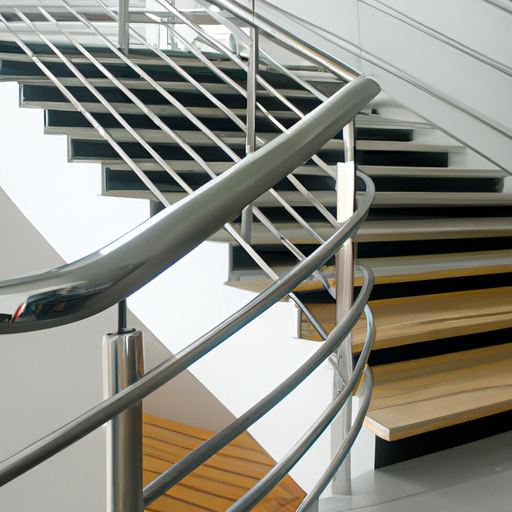
Managing the mess from latte spills on your staircase railings and banisters can feel daunting, especially if you’re unsure about the best way to begin the cleaning process. As someone who consumes caffeine on a daily basis, I understand the difficulty of keeping a home clean and free from stains. This challenge has prompted me to find various successful techniques for removing latte stains from staircases, and I’m excited to share these methods with you.
Firstly, it’s important to understand just how challenging latte stains can be. Not only are they unsightly, but they also tend to stick around if not treated properly. This means that simply wiping them away with a damp cloth won’t always do the trick. But don’t worry – with the right cleaning supplies and techniques, your staircase can look as good as new in no time!
Keep reading for my step-by-step guide on how to tackle those pesky latte stains on your staircase railings and banisters.
Key Takeaways
- Natural cleaning agents such as vinegar, baking soda, rubbing alcohol, and lemon juice are effective in removing latte stains from staircase railings and banisters.
- It is important to establish house rules for no food or drinks on the stairs to prevent future stains.
- Using protective covers on railings can provide an added layer of protection against accidental spills or scratches and can help extend the lifespan of railings.
- When cleaning, it is important to use the right cleaning technique and avoid using abrasive materials or harsh chemicals to prevent damage to the railings and banisters.
Understanding the Challenge of Latte Stains
You’re probably thinking, "Latte stains on staircase railings and banisters? That sounds like a nightmare to clean!"And you’re absolutely right. Latte stains can be stubborn and difficult to remove, especially when they’ve set into porous surfaces like wood or fabric.
But don’t worry, with the right techniques and cleaning products, it’s possible to get rid of those pesky stains. When it comes to latte stain removal techniques, there are several options available.
One effective method is using a mixture of white vinegar and water. Simply mix equal parts of both liquids in a spray bottle and apply it onto the affected area. Let it sit for a few minutes before wiping it away with a clean cloth.
Another technique involves using baking soda and water as a paste that you can rub onto the stained area before rinsing it off with warm water. Of course, having the right cleaning products for latte stains is essential for getting rid of them completely.
Look for products specifically designed for removing coffee or tea stains from surfaces such as upholstery or wood furniture. These products usually contain enzymes or other active ingredients that break down the proteins in the stain so that they can be easily lifted away.
Now that we’ve covered some basic techniques and products for removing latte stains from staircase railings and banisters, let’s move on to gathering the right cleaning supplies…
Gathering the Right Cleaning Supplies
To get started, it’s important to have the proper tools for tackling the mess left behind. When it comes to cleaning latte stains on staircase railings and banisters, choosing eco-friendly options is key.
Not only will this benefit the environment, but it will also ensure that your cleaning supplies are safe for use around children and pets. Using natural cleaning agents can also be an effective way to remove latte stains without damaging the surface of your stairs.
Lemon juice, vinegar, and baking soda are all great options for removing tough stains. Simply mix these ingredients together in a spray bottle or bowl and apply them directly onto the affected area. With the right tools in hand, you’re one step closer to restoring your staircase back to its original state.
But before we begin cleaning, it’s important to prepare the staircase first by removing any loose debris or dirt that may be present on the surface. This will ensure that our cleaning efforts are focused solely on removing those stubborn latte stains from your railings and banisters.
Preparing the Staircase
Before we can effectively tackle the mess on our stairs, it’s crucial to properly prepare the area by removing any loose debris or dirt that may interfere with our cleaning process. This involves sweeping or vacuuming the staircase thoroughly to ensure that there are no obstructions.
We should also consider choosing the right lighting so that we can see any stains or spots easily. Another important factor to keep in mind when preparing the staircase is maintaining a consistent temperature. Extreme temperatures, be it hot or cold, can affect the effectiveness of our cleaning solution. Therefore, it’s best to work in a comfortable environment and avoid cleaning during extreme weather conditions.
Now that we have removed all loose debris and maintained a consistent temperature in the area, we are ready to move onto applying the cleaning solution. It’s essential to choose an appropriate cleaner for our specific type of banister or railing material. By using an effective cleaning solution and following proper techniques, we can eliminate those unsightly latte stains once and for all!
Applying the Cleaning Solution
Alright, now that we’ve got the staircase all cleaned up and ready, it’s time for the next step: applying the cleaning solution.
Choosing the right cleaning technique is crucial to effectively removing any stains or dirt on your railings and banisters. Once you’ve identified the best method, it’s important to apply the solution carefully to ensure full coverage of the stain.
Choosing the Right Cleaning Technique
When it comes to cleaning latte stains on staircase railings and banisters, finding the right cleaning technique can be a game-changer. Here are some cleaning techniques and stain removal strategies that have worked for me:
-
Use vinegar: Vinegar is a natural cleaner that can remove tough stains. Mix equal parts of vinegar and water in a spray bottle. Spray the solution on the stain, let it sit for a few minutes, and wipe it off with a clean cloth.
-
Try baking soda: Baking soda is another natural cleaner that can remove stains. Mix baking soda with water to create a paste. Apply the paste on the stain, let it sit for 10-15 minutes, and wipe it off with a damp cloth.
-
Use rubbing alcohol: Rubbing alcohol is an effective disinfectant that can also remove stains. Dab some rubbing alcohol onto a cloth and rub it onto the stain until it disappears.
-
Try lemon juice: Lemon juice has acidic properties that can help break down stains. Squeeze fresh lemon juice onto the stain, let it sit for 5-10 minutes, and wipe it off with a damp cloth.
-
Use commercial cleaners: There are many commercial cleaners available in stores specifically designed to remove tough stains from surfaces like banisters and railings.
Now that you know about these cleaning techniques and stain removal strategies, you’ll be able to choose the best one for your situation when dealing with latte stains on your staircase railings or banisters.
In the next section, I’ll talk about how to apply the solution to effectively tackle those stubborn coffee marks.
Applying the Solution to the Stain
In the previous subtopic, we talked about choosing the right cleaning technique for removing latte stains on staircase railings and banisters. Now that you have identified the appropriate method to use, it’s time to apply the solution to the stain. But before doing so, there are a few things you need to keep in mind.
Firstly, it’s essential to perform a pre-cleaning treatment on the affected area. This step involves wiping down the surface using a damp cloth or sponge to remove any loose debris or dirt. Next, you can proceed with applying your chosen cleaning solution onto a clean microfiber cloth or directly onto the stain itself. In case you’re unsure of which product to use, don’t worry as we’ve listed some alternative solutions that can do just as well in getting rid of those stubborn latte stains.
To help visualize our alternatives better, here’s a table showing their effectiveness levels and cost:
| Cleaning Solution | Effectiveness Level | Cost |
|---|---|---|
| Vinegar and Baking Soda Mixture | High | Low |
| Hydrogen Peroxide Solution | Medium-High | Medium-Low |
| Commercial Latte Stain Remover | High | High |
With these options laid out before you, choose what suits your budget best while still giving excellent results in cleaning up those pesky latte stains off your staircase railings and banisters. Once done with this step, we can now move on to scrubbing away at those stains!
Scrubbing the Stain
Now that I’ve applied the cleaning solution, it’s time to start scrubbing the stain.
One important thing to keep in mind is to use just the right amount of pressure when scrubbing. Too much pressure could damage the staircase, so it’s essential to be careful and avoid applying too much force.
By being gentle yet thorough, we can effectively remove the stain without causing any harm or additional damage.
Using the Right Amount of Pressure
To get rid of those pesky latte stains on your staircase railings and banisters, make sure you’re using just the right amount of pressure when scrubbing. Pressure control is crucial in maintaining the cleaning efficiency of your efforts.
Too much pressure can damage the surface, while too little won’t effectively remove the stain. Using a gentle but firm grip on your sponge or rag, apply consistent pressure as you scrub.
Make sure to cover every inch of the stained area without using too much force that could cause scratches or scuffs on your staircase railing or banister. Once you’ve achieved satisfactory results, move onto the next section while taking care not to accidentally bump into anything and cause any further damage.
Avoiding Damage to the Staircase
Don’t risk wrecking your entire staircase while trying to get rid of those pesky marks! Preventing damage should be a top priority when cleaning latte stains on staircase railings and banisters. Here are some maintenance tips to keep in mind:
Firstly, avoid using abrasive materials or harsh chemicals when cleaning the stains. These can scratch or discolor the surface of the railings and banisters, causing more damage than good. Instead, opt for gentle cleaners like soap and water or a vinegar solution. Use a soft cloth or sponge to apply the cleaner, being careful not to rub too hard.
Secondly, always test any new cleaning product on an inconspicuous area first before applying it all over the staircase. This will help you determine if there are any adverse reactions that could cause further damage.
Additionally, it’s important to regularly maintain your staircase by wiping down railings and banisters with a dry cloth to prevent dust buildup.
Now that we’ve covered preventing damage and maintenance tips for cleaning latte stains on staircases, let’s move onto rinsing the staircase for a truly spotless finish.
Rinsing the Staircase
Now that I’ve scrubbed away the latte stains from the staircase railings and banisters, it’s time to rinse off any residue left behind.
I’ll be using a bucket of hot water with a splash of vinegar added in to ensure all traces of cleaning solution are removed.
Once the rinsing is complete, I’ll need to dry the surface thoroughly to prevent any potential slips or falls.
Removing Residue from the Staircase
After wiping away the excess latte residue, you’ll notice some stubborn stains still clinging to the staircase railings and banisters. To remove these stains, I recommend using a mixture of warm water and dish soap. Apply the solution directly onto the stained area and use a soft-bristled brush to gently scrub the surface. Be sure to avoid using abrasive materials or harsh chemicals that could damage the paint or finish.
If dish soap doesn’t do the trick, you can try using a specialized cleaner designed for removing tough stains on surfaces like metal or wood. Below is a table comparing preventive measures against hiring professional cleaning services:
| Preventive Measures | Professional Cleaning Services |
|---|---|
| Regularly wipe down surfaces with a damp cloth | Use industrial-strength cleaning solutions |
| Avoid spills by holding drinks carefully | Utilize high-pressure steam cleaning |
| Use coasters under drinks | Apply protective coatings to prevent future staining |
Once all of the residue has been removed from your staircase, it’s time to move on to drying the surface without leaving any streaks behind.
Drying the Surface
To ensure a streak-free finish, simply use a clean and dry cloth to wipe down the surface. Effective drying techniques are crucial in preventing moisture buildup, which can lead to water spots and potential damage to the railing or banister.
Here are some tips to help you achieve optimal drying results:
- Use a microfiber cloth for better absorption and to avoid leaving lint behind.
- Start at the top of the banister or railing and work your way down, wiping in a back-and-forth motion.
- Pay extra attention to corners and crevices where moisture tends to accumulate.
By following these simple steps, you can ensure that your staircase remains clean and free from any unsightly stains.
Once the surface is completely dry, it’s time to move on to repeating the cleaning process if necessary.
Repeating the Process
You’ll want to keep repeating the process until the latte stains are completely gone from your staircase railings and banisters. This is especially important if you’re dealing with stubborn stains that won’t come off easily. The importance of patience can’t be overstated in this situation, as it may take several attempts before you see any significant improvement.
When repeating the cleaning process, it’s important to start with a fresh batch of cleaning solution each time. This ensures that you’re not just spreading around old coffee stains on your stairs. Additionally, make sure to use a clean cloth or sponge every time you apply the solution to avoid transferring dirt and grime back onto the surface.
After several rounds of cleaning, inspect your railings and banisters closely for any remaining stains. If there are still some areas that need attention, focus on those spots until they’re completely gone.
Once all of the latte stains have been removed, it’s time to move on to preventing future stains from occurring again in the future.
Now that your staircase is free from latte stains, let’s discuss some tips for preventing future spills and keeping your railings and banisters looking clean and pristine.
Preventing Future Stains
I’ve learned my lesson on how difficult it can be to clean latte stains off staircase railings and banisters.
To prevent future stains, I plan on establishing house rules for no food or drinks on the stairs.
I’ll also invest in protective covers for the railings and banisters to make cleaning easier.
Establishing House Rules
Like the rules of a game, establishing house rules is crucial in maintaining order and keeping everyone on the same page. As someone who’s dealt with latte stains on staircase railings and banisters before, I know it’s important to communicate with your household about preventing future stains.
Setting boundaries and discussing expectations can go a long way in avoiding spills and messes. Here are some tips for establishing effective house rules to prevent future stains:
- Have an open discussion with all members of the household about expectations for cleanliness
- Encourage everyone to speak up about their concerns or needs
- Set clear consequences for not following the established rules
By taking these steps, you can ensure that everyone is aware of what they need to do to keep your home clean and free from latte stains. With these guidelines in place, you’ll be able to move onto the next step: using protective covers.
Using Protective Covers
After establishing house rules, it’s important to take preventive measures to minimize potential damage to the staircase railings and banisters. One way to do this is by using protective covers. These covers serve as a barrier between the surface of the railing and any possible stains or scratches that can be caused by everyday use.
There are various benefits of using protective covers on your staircase railings and banisters. For one, they provide an added layer of protection against accidental spills or scratches. Additionally, they can help extend the lifespan of your railings by reducing wear and tear over time. When choosing a cover material, it’s important to consider durability, ease of cleaning, and aesthetic appeal that complements your home decor.
Moving forward into maintaining a clean staircase requires consistent effort in keeping up with regular cleaning routines while also taking precautions to prevent future stains or damages from occurring.
Maintaining a Clean Staircase
You can easily maintain a clean staircase by wiping down the railings and banisters regularly with a cleaning solution. Not only will it keep your stairs looking beautiful, but it’ll also prevent dirt buildup and keep them safe from wear and tear.
To begin, start by dusting off any loose debris or cobwebs that may have accumulated on the railings or banisters. Next, mix together a cleaning solution of warm water and mild detergent in a bucket. Using a soft cloth or sponge, gently wipe down the rails and banisters with the mixture. Make sure to get into all the nooks and crannies where dirt may accumulate.
Once you’ve finished wiping everything down, rinse with clean water and dry thoroughly with a clean towel. Consider using a protective cover on your railings to help prevent future stains or damage from occurring. There are many options available such as plastic covers or fabric sleeves that can slide over your railing for added protection.
By following these simple steps, you can ensure that your staircase remains beautiful and safe for years to come!
Frequently Asked Questions
Can I use any type of cleaning solution on my staircase railings and banisters?
When it comes to cleaning solution options for staircase railings and banisters, I always make sure to prioritize safety precautions. It’s important to choose a cleaning solution that is appropriate for the material of the railing or banister, as well as one that won’t cause any damage or harm.
While there are many different types of cleaning solutions available, not all of them may be suitable for your specific situation. That’s why it’s important to do some research and perhaps even consult with a professional before selecting a cleaning solution.
In addition, always remember to wear protective gloves and eyewear when handling any type of cleaning solution, as well as ensure proper ventilation in the area where you’re working. By taking these precautions, you can safely and effectively clean your staircase railings and banisters without causing any harm or damage.
What is the best way to remove old and stubborn latte stains?
When it comes to removing old and stubborn stains, the best approach is to use a combination of effective products and DIY solutions. I’ve found that using a mixture of baking soda and vinegar can be highly effective in breaking down tough stains, while also being gentle on surfaces.
Additionally, there are many great commercial cleaning products available that are specifically designed to remove stubborn stains. It’s important to always follow the manufacturer’s instructions when using these products, as they can be quite potent.
Ultimately, the key is to be persistent and consistent in your cleaning efforts – with time and effort, even the toughest latte stains can be removed!
How often should I clean my staircase railings and banisters to prevent stains from accumulating?
When it comes to maintaining a clean and inviting home, there are few things that can be more frustrating than the accumulation of stains and grime in hard-to-reach areas.
That’s why I always make sure to take preventative measures before any issues arise. In my experience, the frequency of cleaning these areas will depend on how much traffic they see on a day-to-day basis.
However, I find that performing a deep cleaning every few weeks can go a long way in preventing the buildup of stubborn stains. Additionally, taking simple steps like wiping down surfaces regularly and using protective coverings during messy activities can also help keep your home looking its best.
By staying on top of these small tasks, you can avoid larger headaches down the road and ensure that your space always looks its best.
Is it safe to use a scrub brush or abrasive sponge on my staircase railings and banisters?
When it comes to cleaning staircase railings and banisters, using a scrub brush or abrasive sponge might seem like a good idea for tough stains. However, it’s important to consider the safety of your surfaces before using such tools.
Scrub brushes can scratch and damage certain finishes on railings and banisters, while abrasive sponges can leave behind scratches that are difficult to remove. Instead of risking damage with these options, consider using gentler alternatives such as microfiber cloths or soft-bristled brushes.
Not only will this help preserve the integrity of your staircase, but it’ll also ensure that future cleaning sessions are easier and less time-consuming.
Are there any natural or homemade cleaning solutions that are effective for removing latte stains?
I’m excited to share with you some alternative methods and eco-friendly options that have worked wonders for me in removing stubborn stains around my home.
One effective solution I’ve found for removing tough stains is a mixture of white vinegar and baking soda. This combination creates a powerful, yet natural cleaning agent that can tackle even the toughest of stains.
Another option is using lemon juice, which works well on lighter stains and has the added benefit of leaving behind a fresh scent.
These homemade solutions not only get the job done without harsh chemicals, but they’re also better for the environment.
So next time you’re faced with a tough stain, give these natural alternatives a try!
Conclusion
In conclusion, cleaning latte stains on staircase railings and banisters is a challenging task that requires patience and the right tools. However, with the proper preparation and technique, it’s possible to remove the stubborn stains and maintain a clean staircase.
To effectively clean latte stains, it’s important to gather the right cleaning supplies such as white vinegar, baking soda, and a scrub brush. Additionally, preparing the staircase by removing any loose debris or dust will help ensure that the cleaning solution can penetrate the stain.
Applying the solution onto the stain before scrubbing vigorously will loosen up any remaining residue. Rinsing off all of the solution will prevent any further damage or staining from occurring. Repeating these steps if necessary can ensure that all traces of latte stains are removed.
Finally, preventing future stains can be achieved by being mindful of spills and promptly wiping them up with a damp cloth. Regular maintenance by dusting or vacuuming your staircase can also keep it looking fresh for longer periods of time.
By following these simple steps, you can have a beautiful and clean staircase free from annoying latte stains!
Hi, I’m Ellen. I love making cleaning fun and rewarding – so everyone can feel confident in their ability to keep their space spick and span. Our vision is a world where everyone knows how to clean their home. In the meantime, I’ll continue writing Steam Mop List to help make your life a little easier (and hopefully a little more fun).
-

 Cleaning4 weeks ago
Cleaning4 weeks agoHow To Safely And Efficiently Remove Latte Stains From Delicate Suede Materials
-

 Cleaning4 weeks ago
Cleaning4 weeks agoHow Do You Get Orange Juice Stains Out of Carpet?
-

 Cleaning4 weeks ago
Cleaning4 weeks agoHow To Expertly Clean And Maintain Hardwood Or Wooden Floors After A Latte Spill
-
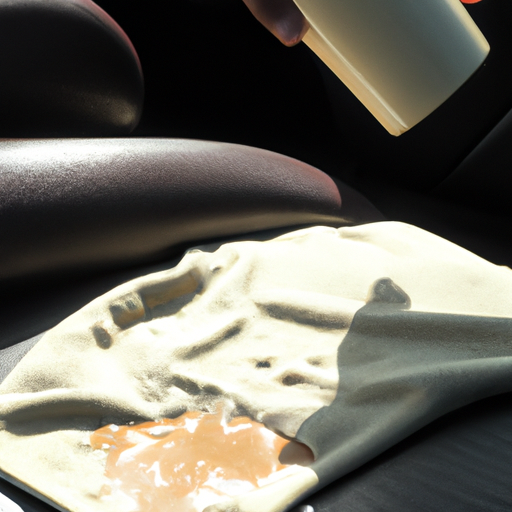
 Cleaning4 weeks ago
Cleaning4 weeks agoHow To Detect And Effectively Clean Latte Stains In Unconventional Spots
-
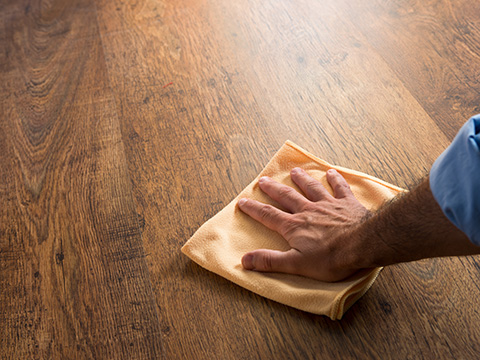
 Steam Mop4 weeks ago
Steam Mop4 weeks agoCan You Use a Steam Mop on Vinyl Plank Flooring?
-

 Steam Mop4 weeks ago
Steam Mop4 weeks agoCan I Use a Steam Mop on Laminate Floors?
-
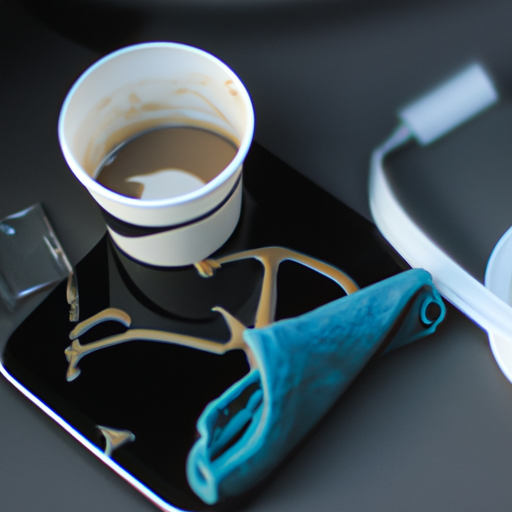
 Cleaning4 weeks ago
Cleaning4 weeks agoExploring Uncommon Areas Where Latte Spills May Occur And How To Clean Them
-
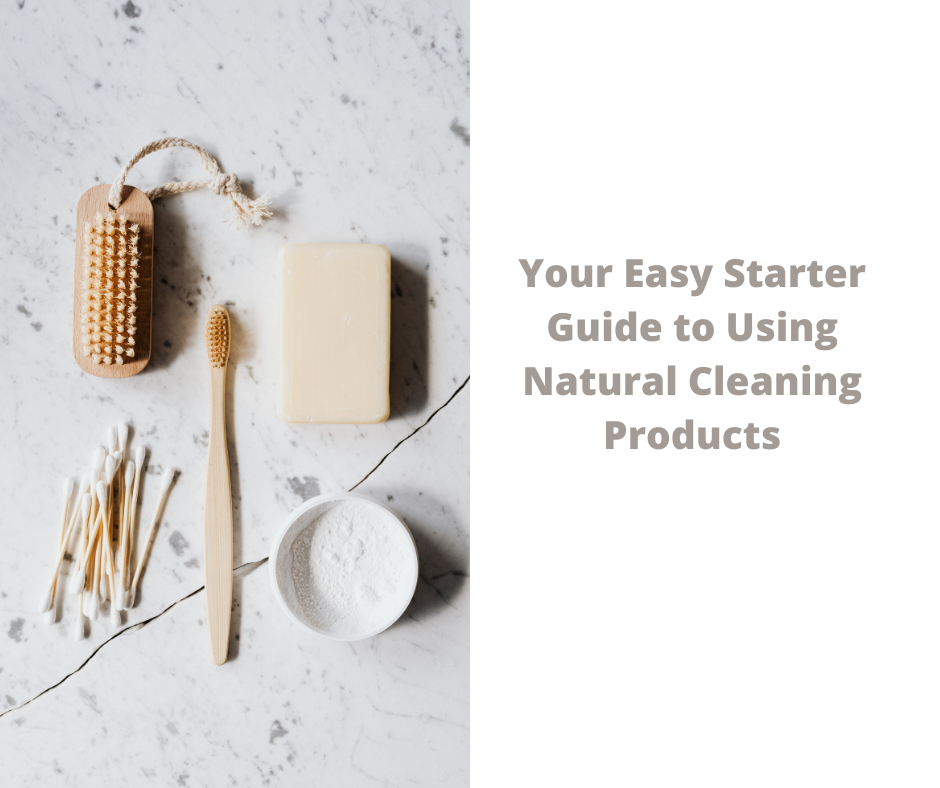
 Beginners Guides4 weeks ago
Beginners Guides4 weeks agoYour Easy Starter Guide to Using Natural Cleaning Products
